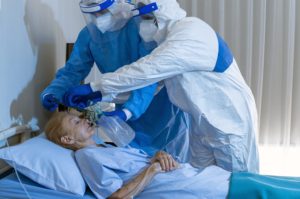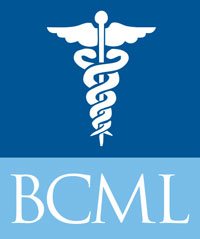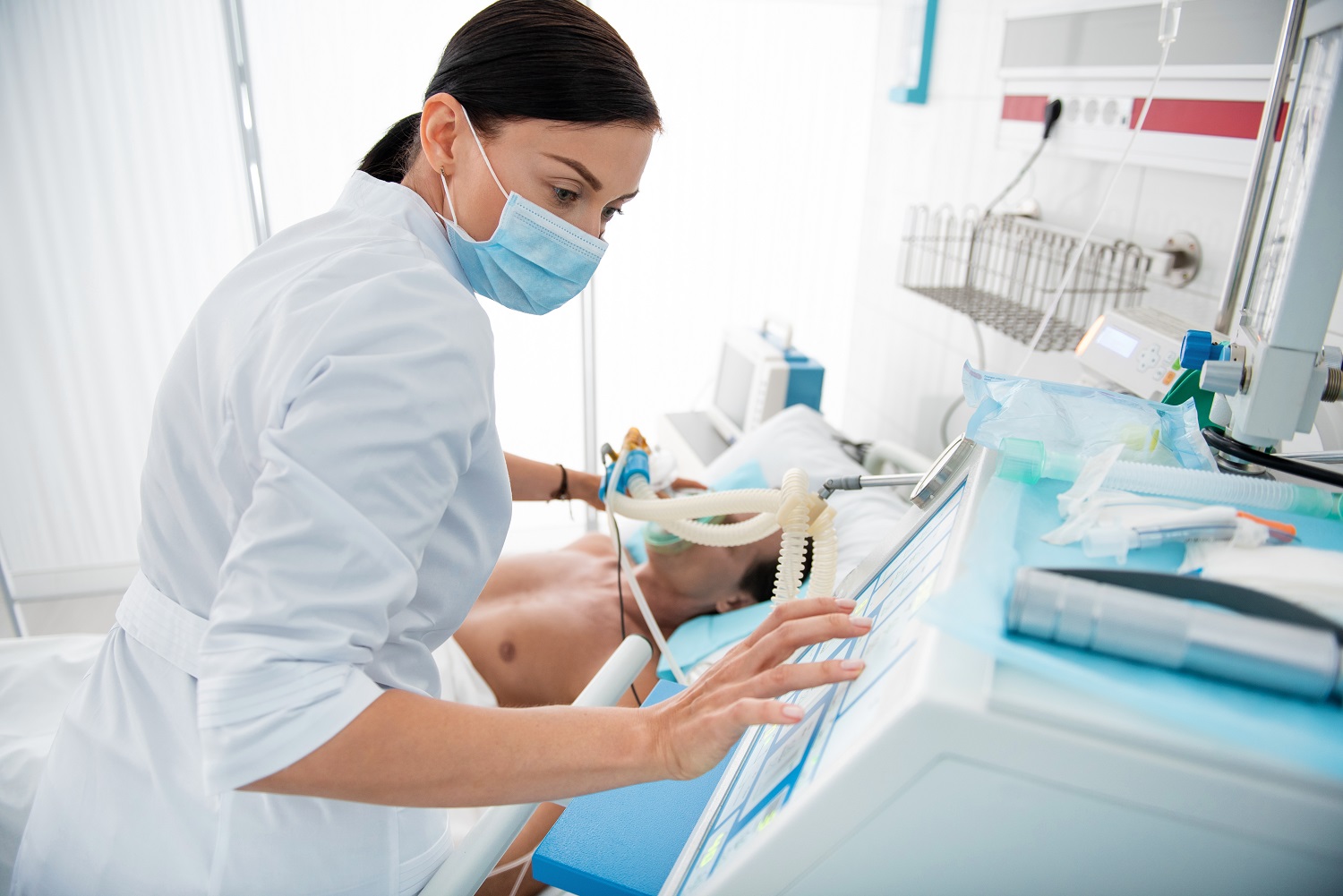While the majority of people who contract COVID-19 will be able to manage symptoms at home, the World Health Organization reports that about 1 in 5 will require hospitalization. Around a quarter of patients who do require hospitalization will also require time in the Intensive Care Unit for respiratory support therapies including the use of a ventilator.
This is due to the host of complications that COVID-19, the disease caused by the novel coronavirus, can cause in the lungs. Here we will look at the respiratory support hospitals provide and what you can do at home to manage symptoms.
Monitoring Symptoms and When to Seek Respiratory Management for COVID-19
Currently, there are three levels of COVID-19 severity recognized: Mild to Moderate, Severe, and Critical.
 Mild to Moderate
Mild to Moderate
Roughly 80% of those who contract COVID-19 will have mild to moderate symptoms that will not require hospitalization. Symptoms here are likely to include fever, chills, muscle aches, headaches, intestinal discomfort, fatigue and even mild “walking” pneumonia.
Severe
Severe complications will affect around 15% of patients. Here, patients are likely to experience all of the symptoms of a mild infection along with greater difficulty breathing, confused thinking due to low oxygen levels, and a greater likelihood of developing pneumonia.
Critical
Critical complications can include complete respiratory failure and dysfunction in other organs including the heart, lungs and kidneys. Critical cases will require the use of a ventilator and must be addressed as quickly as possible to help prevent more damage to the organs and even more severe outcomes.
Disease Progression and When to seek Respiratory Management

Those with mild cases are likely to recover within two weeks while moderate sufferers may take from three weeks or more depending on if they develop walking pneumonia. However, severe complications in the form of laboured breathing, known as dyspnea, can manifest within a week following initial symptoms.
While some may recover from these severe symptoms, others will develop a critical condition known as Acute Respiratory Distress Syndrome (ARDS). Patients who develop ARDS are, on average, admitted into the hospital within twelve days after the onset of symptoms.
When to Call the Doctor
You should call the doctor if you see symptoms getting worse, especially if you develop breathing difficulty, chest pain or experience symptoms that would suggest low oxygen levels. Confused thinking, dizziness, rapid breathing and a lack of coordination can all be indicative of low oxygen levels in the blood.
If you have mild symptoms, it is important to understand that these can progress. The timeline of progression will vary between patients but it is possible for critical complications to develop twelve days or longer after initial symptoms. Monitor your symptoms and continue to quarantine until your symptoms have gone away and you have not registered a fever in at least three days or you text negative on two separate COVID-19 tests administered 24 hours apart.
What are the Risk Factors of Developing Critical COVID-19 Disease?
While there have been documented cases of fatalities across all age groups and people of all health levels, the most at-risk persons are ones with underlying conditions and/or advanced age.
Those who are 65 and older are more likely to develop complications as are people whose immune systems are compromised. Relatively common conditions such as heart failure, heart disease, COPD and diabetes can all increase the risk of critical symptoms developing.
Treatment of Pneumonia and ARDS Caused by COVID-19

Instead, your doctor will likely recommend rest, pain relievers, and cough medicine for mild cases. If your breathing difficulty is severe enough to warrant a trip to the hospital, you may be given oxygen from an oxygen tank through tubes that are inserted into your nostrils. However, more severe pneumonia and acute respiratory distress syndrome (ARDS) will require the use of a ventilator.
ARDS can be caused by pneumonia but it is a more advanced condition with even more severe breathing complications that can have lasting effects. Some patients who recover can still have breathing complications due to scar tissue on the lungs. When ARDS or pneumonia develop, medical intervention with a ventilator is critical.
What to Expect from Ventilator Treatment?
Although a ventilator’s function is massively important to the care of critical COVID-19 patients, it is a relatively simple device. It is, in short, a machine that pushes air into the lungs (ventilation) and also provides an extra dose of oxygen (oxygenation) which is vital to your organs.
The difficulty for patients with this device is that it works by pushing air through a hose directly into your airway. Intubation is the process by which that tube is inserted. While there may be relief at finally getting critical oxygen, being intubated is not pleasant and patients will not be able to speak, eat or drink during this treatment.

Noninvasive Ventilation
For less severe breathing complications, patients may also receive oxygen through a mask. This treatment does not provide the same level of lung support as ventilation with intubation but it can give relief to many with mild to moderate symptoms.
At-Home Supportive Care
For the millions of people who have COVID-19, at-home supportive care options will vary depending on your symptoms. For some, care will be minimal and will likely require little more than additional rest and fluids. For others, the symptoms may not warrant a hospital visit but they will require more action to mitigate the negative effects of the disease.
Ultimately, for those who do not require in-hospital care, the most important measure you can take for yourself and those around you is to quarantine until your symptoms and fever have abated. For most, this will mean a minimum of ten days from the onset of symptoms. However, two weeks of quarantine is preferred if you do not have access to a COVID-19 test to verify your health.
Resting at this time, socially distancing, and closely monitoring the progression of your symptoms is the best course of action for yourself and your loved ones.
What to Do if You Suspect You Have COVID-19
Whether you have already begun to exhibit symptoms or if you are concerned after coming into contact with someone who was infected, it is best to start quarantining. If people can begin quarantining immediately after they have been exposed to the virus, this is one way we can help reduce transmission. Of course, if quarantine is not possible, take precautions to wear a mask, gloves and wash your hands frequently.
Do you still have questions or concerns about your health or COVID-19? BCML is here for you. We offer both traditional and telehealth appointments for your convenience and safety. For all your health needs, contact us to schedule an appointment. Call 416-929-1900 to book an appointment today!


 Mild to Moderate
Mild to Moderate